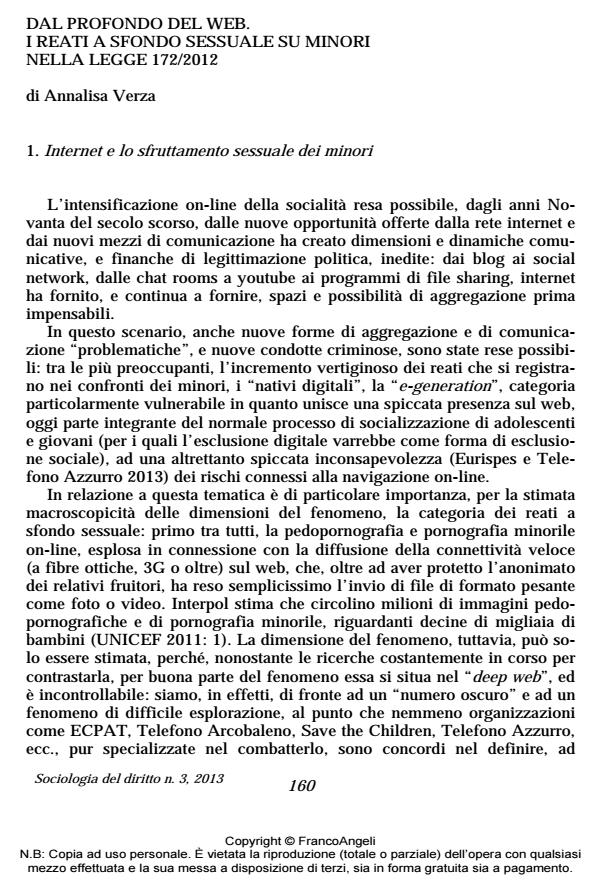Dal profondo del web. Pedofilia e pedopornografia nella legge 172/2012
Titolo Rivista SOCIOLOGIA DEL DIRITTO
Autori/Curatori Annalisa Verza
Anno di pubblicazione 2014 Fascicolo 2013/3
Lingua Italiano Numero pagine 10 P. 160-169 Dimensione file 483 KB
DOI 10.3280/SD2013-003008
Il DOI è il codice a barre della proprietà intellettuale: per saperne di più
clicca qui
Qui sotto puoi vedere in anteprima la prima pagina di questo articolo.
Se questo articolo ti interessa, lo puoi acquistare (e scaricare in formato pdf) seguendo le facili indicazioni per acquistare il download credit. Acquista Download Credits per scaricare questo Articolo in formato PDF

FrancoAngeli è membro della Publishers International Linking Association, Inc (PILA)associazione indipendente e non profit per facilitare (attraverso i servizi tecnologici implementati da CrossRef.org) l’accesso degli studiosi ai contenuti digitali nelle pubblicazioni professionali e scientifiche
Questo articolo vuole esporre e commentare, anche alla luce del loro presumibile impatto sociale, alcune delle più importanti novità di diritto sostanziale introdotte dalla l. 172/2012 che ha ratificato la Convenzione di Lanzarote del 2007 sulla protezione dei minori dallo sfruttamento e dagli abusi sessuali: dall’introduzione dei nuovi reati di istigazione a pratiche di pedopornografia e pedofilia (art. 414-bis c.p.) e di adescamento di minore (art. 609-undecies c.p.), alle modifiche in tema di corruzione di minore (art. 609-quinquies c.p.) e di pornografia minorile (600-ter c.p.).
Parole chiave:Minori, Abusi sessuali, Legge 172/2012, Convenzione di Lanzarote
- L'infanzia violata. Devianza reticolare e digitalizzazione della pedopornografia Domenico Carzo, Antonia Cava, in SOCIOLOGIA DEL DIRITTO 3/2021 pp.116
DOI: 10.3280/SD2020-003006
Annalisa Verza, Dal profondo del web. Pedofilia e pedopornografia nella legge 172/2012 in "SOCIOLOGIA DEL DIRITTO " 3/2013, pp 160-169, DOI: 10.3280/SD2013-003008